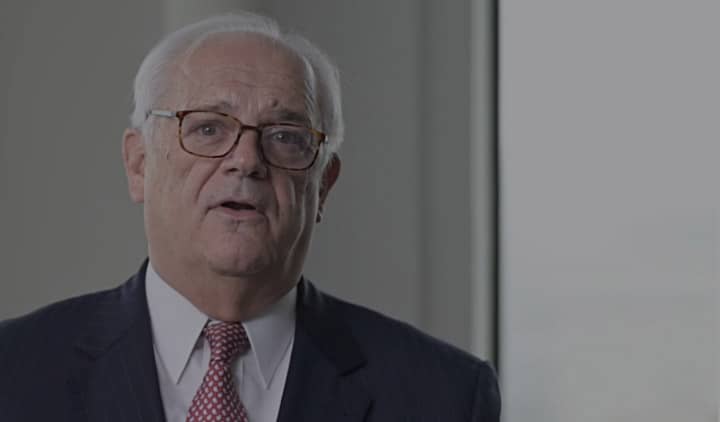Walkup, Melodia, Kelly & Schoenberger took the lead role in prosecuting cases following the traumatic MUNI light rail collision at the West Portal Station. Of the several dozen people injured in the collision, Walkup Melodia handled 10 of the cases, the most of any personal injury law firm.
Following the incident, the National Transportation Safety Board (NTSB) completed a nearly 2-year investigation of the collision. The NTSB’s recently released report sheds considerable light on the events at West Portal Station on July 18, 2009.
Among the most shocking discoveries are that the L-Taraval operator—the man who caused this terrible collision—caused a similar accident in 2007, though on a smaller scale. The report also provides information about the last few seconds before impact, and about the MTA’s poor oversight of MUNI operations. The report closes by using strikingly direct language in explaining MUNI’s safety failures.
Automatic Versus Manual Control Mode
video
MUNI trains have two modes in which they can operate: Manual or Automatic. When the train is in Manual control mode, the operator controls its speed and location. This allows the operator to enter a tunnel at a speed of his choosing.
When the train is in Automatic control mode, MUNI’s central control system determines the speed at which the train will operate. It also controls when the train can enter various parts of the system, such as the tunnels in the system. For example, at West Portal Station, a train under Automatic control cannot enter the station until the train in front of it has left the platform.
MUNI also has specific rules about when trains must be in Automatic mode. At West Portal Station, all trains must enter the station under Automatic control. After picking up and dropping off passengers, the train leaves under Manual control. Under these rules, a train approaching from behind cannot strike a train parked at the platform, but a departing train can accelerate out quickly under Manual control.
It is permissible to operate under Manual control in an Automatic control section, but only after first getting permission from Operations Control Center (OCC).This rule is set forth in Chapter 7 of MUNI’s manual, in the “Special Operations” Section.
Based on our years of handling cases against MUNI, we have built a complete library of policies and procedures applicable to MUNI operation and training. Khaldoun Bagdadi, one of our MUNI train accident attorneys, explains how we use this library of information to our client’s advantage in this video.
Rule 7.1 deals with Automatic Train Control System areas. Specifically, Rule No. 7.1.2 requires operators to get permission to switch from Automatic to Manual control mode:
“Trains entering the ATCS cut-out mode must notify OCC when about to make a portal entry. The train must not proceed without an authorized route from OCC.”
In this context, switching into “cut-out” mode means switching from Automatic to Manual. When an operator makes this switch without getting permission first, he is directly violating mandatory MUNI safety policies.
There Was A Prior Similar Collision
On August 24, 2007, MUNI operator Henry Gray approached West Portal Station going outbound. In violation of MUNI Rule 7.1.2, he shifted from Automatic control mode into Manual with first asking the Operations Control Center for permission. Because he was in Manual mode, he was able to enter the West Portal platform area even though another LRV was dropping off and picking up passengers. Failing to come to a stop short of the parked LRV, Mr. Gray ran into that LRV at about 5 m.p.h. Fortunately, this was not enough of an impact to cause serious injuries.
Given that his conduct amounted a clear violation of MUNI rules, Mr. Gray was suspended for 5 days.
MUNI Overlooked Operators’ Repeated Rule Violations In The Years Before The West Portal Collision
The NTSB’s report also investigated how frequently MUNI trains enter West Portal Station on Manual control. In the year before July 2009, 40% of the MUNI trains that entered the station did so on Manual control-almost certainly in violation of MUNI rules.
Even after the July 2009 collision, the practice continued at an 11% rate the month after the collision, then at 8% for the next 9 months. Even a figure of 8%, provided the operators are not asking the Operations Control Center for permission, would mean hundreds of trains enter West Portal Station each month in violation of MUNI’s rules.
The Moments Before Impact On July 18, 2009
On July 18, 2009, Mr. Gray operated an L-Taraval train going outbound. He was following a K-Ingleside train, and had been for several minutes prior to reaching West Portal Station.
At West Portal, to enter the platform area, Mr. Gray switched into Manual mode. He did not, however, first notify the Operations Control Center. As he told NTSB investigators, “I went into cutout [into Manual mode] after my train stopped, which is a normal thing that we usually do.”
Mr. Gray then started moving the train forward, at about 5 m.p.h., toward the stationary K train-then he blacked out.
With the train in Manual mode, nothing stopped it from slamming into the back of the K train.
But it did not simply continue moving at 5 m.p.h. Possibly due to Mr. Gray’s body slumping forward onto the LRV’s controls after he passed out, the train took off with its accelerator stuck in the maximum speed position-barreling toward the parked K train.
What followed was horrible for the passengers onboard the L train, many of whom were later clients of train injury attorneys at Walkup Melodia.
At 2:48:44 p.m., the L train started to move after being switched to Manual mode. Just 17 seconds later, it slammed into the back of the parked K train at 23 m.p.h. It went from 0 to 23 m.p.h. in less than a 1/3 of a minute, a considerable feat for a train weighing many dozens of tons. The experience was terrifying-dozens of passengers were stuck onboard a train that was speeding up when it should have been slowing down.
MUNI Train Collision Resources
The following resources, each with information about this collision, are available here for your review:


